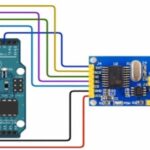The On-Board Diagnostics II (OBDII) system, standard in vehicles since 1996, plays a crucial role in maintaining optimal driving performance and minimizing emissions. By constantly monitoring various engine components and sensors, OBDII can detect issues that affect performance, fuel economy, and overall drivability long before they become noticeable to the driver. This early detection allows for timely repairs, preventing more extensive and costly damage down the road.
Understanding OBDII’s Role in Performance
OBDII utilizes a network of sensors to gather real-time data on critical engine parameters such as air/fuel mixture, ignition timing, and exhaust gas recirculation. This data is continuously analyzed by the vehicle’s computer to ensure optimal engine operation. When a sensor reading deviates from the manufacturer’s predetermined parameters, the system triggers a Malfunction Indicator Lamp (MIL), commonly known as the “Check Engine” light.
A steady MIL indicates a potential emissions-related problem, while a flashing MIL signifies a more serious issue requiring immediate attention to prevent damage to the catalytic converter. This immediate feedback allows drivers to address problems promptly, maintaining optimal engine performance and preventing costly repairs.
OBDII and Fuel Efficiency
A properly functioning engine, as monitored by the OBDII system, burns fuel more efficiently. By detecting issues that can lead to poor fuel economy, such as a faulty oxygen sensor or a malfunctioning fuel injector, OBDII helps maintain optimal fuel consumption. Addressing these issues promptly can lead to significant savings at the gas pump and reduce harmful emissions.
OBDII Diagnostics and Repair
When the MIL illuminates, the OBDII system stores Diagnostic Trouble Codes (DTCs) that pinpoint the source of the problem. Trained technicians can access these codes using a scan tool, enabling quick and accurate diagnosis of the issue. This streamlined diagnostic process reduces repair time and costs, contributing to a more efficient and cost-effective maintenance experience.
While dealerships can diagnose and repair OBDII issues, independent repair shops equipped with the proper tools and training can perform the same services. The OBDII system is designed to provide universal access to diagnostic information, empowering vehicle owners with more repair options.
Maintaining OBDII Readiness
The OBDII system continuously performs self-tests, known as readiness monitors, to ensure all emissions components are functioning correctly. These monitors need to complete their cycles for a vehicle to pass an emissions inspection. Certain events, such as battery disconnection or repairs, can reset these monitors. Driving the vehicle under normal conditions, including highway driving, for a period of time typically allows the monitors to reset.
Conclusion: OBDII for Optimal Performance
OBDII is more than just an emissions control system; it’s a vital component in maintaining optimal driving performance. By providing early detection of potential problems, facilitating efficient diagnostics, and ensuring proper engine function, OBDII contributes to a smoother, more reliable, and fuel-efficient driving experience. Regularly monitoring the MIL and addressing any indicated issues promptly can significantly extend the life of your vehicle and enhance its overall performance.


